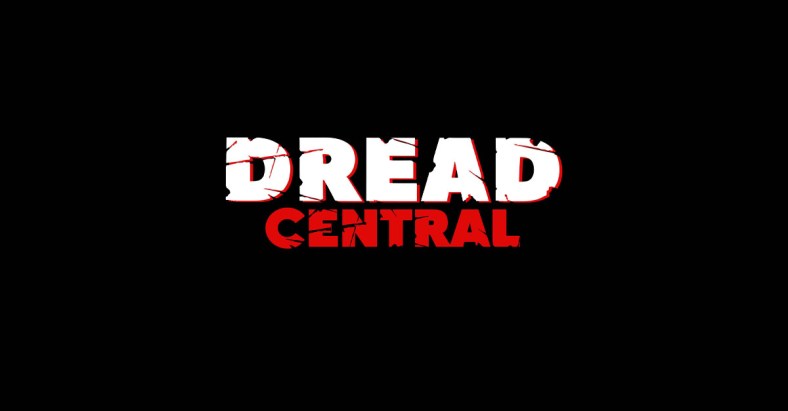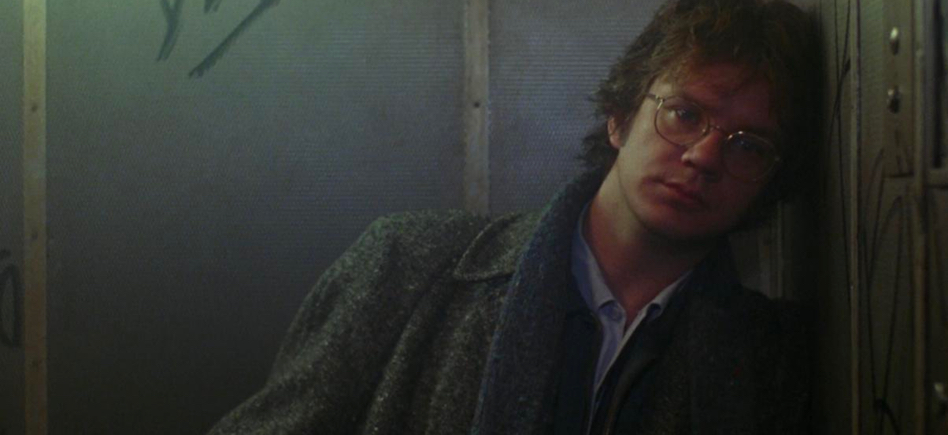Previous Entry: *batteries not included
Connection: actress (Elisabeth Pena)
Current Entry:

Jacob’s Ladder (1990)
Directed by Adrian Lyne
Written by Bruce Joel Rubin
Starring Tim Robbins, Elisabeth Pena, Danny Aiello, Matt Craven, Patricia Kalember, Pruitt Taylor Vince, and Macaulay Culkin
113 minutes, rated R
In my personal history as an avid viewer of horror films, there have been five images that haunted me long after I first saw them. In more than one of these cases, I still have nightmares well into adulthood. These five things are:
1. The little African doll in (the otherwise terrible) Trilogy of Terror
2. The toy clown that strangles the little boy in Poltergeist
3. Freddy Krueger turning the mute teenager into a marionette and walking him like a puppet down the halls of the psychiatric hospital in A Nightmare in Elm Street 3: Dream Warriors
4. Michael Myers using a hot tub to burn the skin off of a naked woman’s face in Halloween II and
5. The Evil Doctor in Jacob’s Ladder
It is quite possible that you have no idea what I am referencing in #5, even if you have seen the film, so I will help you out. He looks like this:

Disturbing, right? He’s only in the movie for a few minutes. He only has a few cryptic lines of dialogue. But by the end of his time on screen, he’s jabbed that long hypodermic needle into the center of Tim Robbins’ forehead and a viewer spends the rest of the movie hoping to God that he doesn’t return.
Jacob’s Ladder is a movie that is difficult to talk about without spoilers. If you’ve seen the movie, you know why I don’t particularly want it spoiled. If you haven’t seen the movie, then you should get on it. It sits very firmly in my top 5 favorite horror movies of all time.
The thing with this movie is that I’m not sure that it’s really fair to call it a horror movie. It certainly has elements of horror– demons, blood-soaked hallways, terrifying imagery– but a viewer is forced to spend so much time trying to figure out just what the hell is going on that the movie earns some credibility as a suspenseful thriller. Really, ultimately, the film is a drama. A deeply-disturbing slice of life, in which the only true antagonist is existence itself.
I saw this film for the first time in Film Appreciation, a first-level film class during my freshman year of college. The film had been selected by the instructor as a fine example for the lighting unit. The instructor chose wisely in this regard. Again, I’m being careful to avoid spoilers, so suffice it to say that lighting is almost a whole character in this film. It’s a dark film by nature, and almost all lighting in the film comes from external sources– through windows into dark rooms or hallways– that creates an undeniable tunnel effect. Thematically, this lighting choice is key. Once you’ve seen the ending, it’s interesting to go back and see what is happening in scenes that are lit from within.
At any rate, I enjoyed the film enough that I bought a copy of the VHS and elected to make the movie my case study for the level two Film Appreciation class. This class was an extension of the first class. We still watched movies that were textbook examples of the various aspects of film (Das Boot for sound, Crooklyn for storytelling, etc.), but this level was composition heavy. We had to write papers on each of the different aspects we studied. For each of those papers, we had to use the film we had chosen for our case study. I must have watched this movie fifteen times alone just in writing papers on it. It’s almost uncountable how many times it got viewed in addition to that. I know that I can think of at least ten people who watched this movie for the first time because I brought it over and said “You need to see this.” My roommate at the time was also quite enamored of this film and had a tendency to foist it on people who were visiting. “Have you seen this? You need to see it.” Eventually, I had to replace my VHS.
There is honestly no way to accurately tell how many times I have seen Jacob’s Ladder since I saw it for the first time in 1995. But I will say this: I notice something new every time. Twenty-five years of viewing and I’m still trying to figure it out. Two years ago, my friends at Mashley at the Movies invited me to record a podcast about this film for their annual 31 Days of Halloween series and it was therein that Ashley made me consider for the first time that the depictions of Jacob’s life with Jezzie were just a fantasy.

The film centers around a postal worker (played by Tim Robbins) named Jacob Singer. Things are looking bleak for poor Jacob. He’s a veteran of Vietnam, an experience that left him with chronic debilitating back trouble. He’s mourning the death of his son (played by Macauluy Culkin), who died in a bicycle accident that might have been caused (in Jacob’s perception, anyway) by his father’s inattentiveness. His wife (Patricia Kalembar) has left him. Maybe he has left his wife? Currently, he lives in squalor with Jezzie (Elisabeth Pena), a co-worker who may, or may not, be the reason that he is now divorced. He is also seeing demons in the subway. And at the doctor’s office. And at after-hours parties. Is Jacob losing his mind?
The film’s narrative is just one agonizing head-trip after another. This effect is not helped by Bruce Joel Rubin’s screenplay not being presented in any sort of ordered or coherent manner. It becomes difficult for a viewer to discern what is really happening, what is a figment of Jacob’s imagination, what is the past and present. He sees a fortune teller who tells him that she cannot find the lifeline on his palm. We see him at home with his wife, his child still alive, as he recounts the terrible nightmare where he was shacking up with a woman from work. We witness him being kidnapped and restrained to a gurney that seems to be on a descent into Hell. But we also see him reading a book as he eats his lunch. We see him running errands. We sit beside him as he receives chiropractic care for his back from his friend and confidante, Louis (played by Danny Aiello).

Jacob (and the audience) eventually begins to get some answers when he is contacted by a former platoon mate (played by Pruitt Taylor Vince). His old friend seems to be experiencing the same confusion and disassociation. Is Jacob’s trouble somehow connected to his service to the military?
Bruce Joel Rubin’s screenplay purports to be based on a true story, and it is, at this point, where that claim comes to play (a title card at the end of the film will explain what I mean). Jacob is contacted by a man named Michael (played by Matt Cravens), a chemist who claims to have been employed by the United States Army’s chemical warfare division to engineer a drug that could potentially increase aggression in soldiers. He divulges that Jacob’s unit was selected as the guinea pigs for the trial runs. If you think that I have broken my promise to not spoil anything, you could not be more wrong. The film only gets stranger and stranger and stranger from here. A good portion of what I have already described happens after this revelation. And I still haven’t talked about the sequence where Jacob is struck by a fever so high that the neighbors in his tenement are forced to empty their freezers so that Jacob can lie submerged in a bathtub full of ice.
This is not a film that provides easy answers. Eventually, answers are provided, but even that answer leaves questions for an audience to interpret themselves. It’s a phantasmagoric fever dream that works on many levels– psychologically, intellectually, and emotionally. In all three regards, this is a movie that will stick with you for a long time to come.
For me, the key to the film’s solution lies in the character played by Danny Aiello. Even with very little screen time, Danny Aiello plays an important role. It is in his few sequences, in which Jacob receives treatment for his back injury, that Jacob seems happy. Their exchanges are pleasant and friendly. Jacob actually smiles. If you should watch the film (for the first time or again), notice that there is a light above Louis’s head as he speaks words of wisdom to our hero. Listen closely to this speech: “Eckhart saw Hell, too. He said the only thing that burns in Hell is the part of you that won’t let go of life, your memories, your attachments. They burn them all away. But they’re not punishing you, he said. They’re freeing your soul.” And, yes, I’ve broken my promise; this speech is a spoiler. But not in the way you think. Not in a way that you can glean from my description of this film. Not in a way that makes clear why Jacob is seen reading The Stranger and is frightened of the subway. Not in a way that explains if the events of this film take place before or after Vietnam. Or if they even happen at all.
